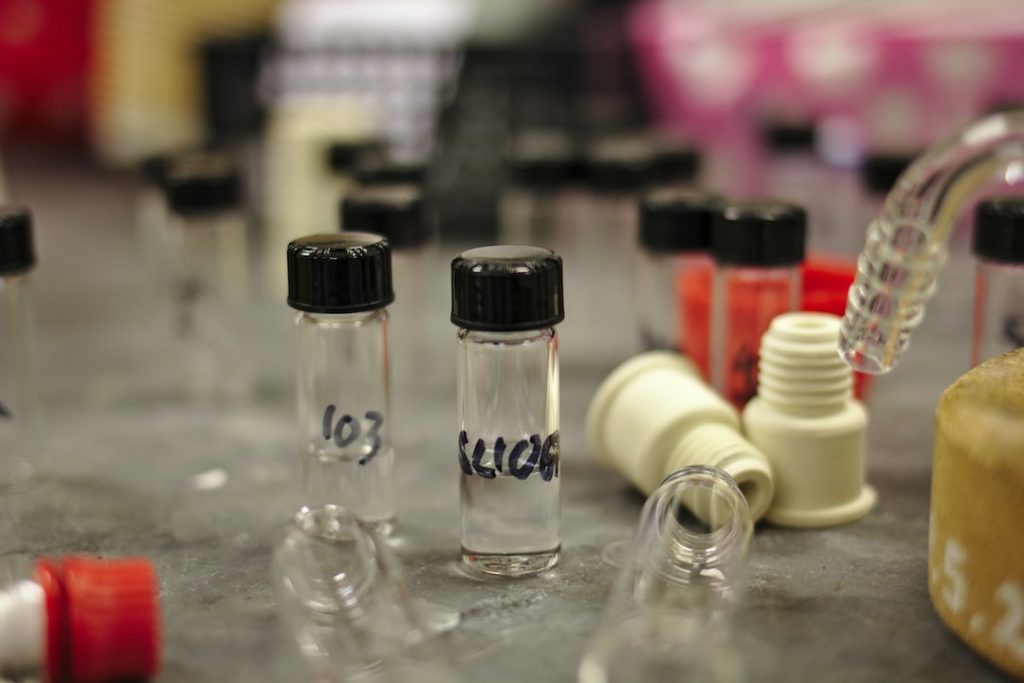Main group chemistry refers to the study of elements in the s and p blocks of the periodic table. These elements are also known as representative elements, as they exhibit a wide range of chemical properties and play a crucial role in various fields. Main group elements include metals, nonmetals, and metalloids, and they are essential for understanding the fundamental principles of chemistry.
Main group chemistry is important in many areas, including materials science, medicine, environmental sustainability, energy technologies, and more. By studying the properties and behavior of main group elements, scientists can develop new materials, improve existing technologies, and find solutions to global challenges.
Key Takeaways
- Main group chemistry involves the study of elements in groups 1, 2, and 13-18 of the periodic table.
- The periodic table is a useful tool for understanding the properties and behavior of main group elements.
- Bonding and structure are important concepts in main group chemistry, influencing the properties and reactivity of compounds.
- Main group elements have a wide range of applications in everyday life, from medicine to energy technologies.
- Research in main group chemistry is focused on emerging trends and addressing challenges for future generations.
The Periodic Table: A Comprehensive Guide to Main Group Elements
The periodic table is a systematic arrangement of elements based on their atomic number and chemical properties. It is divided into several blocks, with the s and p blocks containing the main group elements. The s block consists of groups 1 and 2, while the p block consists of groups 13 to 18.
Main group elements can be classified into metals, nonmetals, and metalloids. Metals are typically found on the left side of the periodic table and have properties such as high electrical conductivity, malleability, and luster. Nonmetals are found on the right side of the periodic table and have properties such as low electrical conductivity and brittleness. Metalloids are located along the staircase line between metals and nonmetals and have properties that are intermediate between the two.
Each group of main group elements has its own unique properties and characteristics. For example, Group 1 elements (alkali metals) are highly reactive and have low melting points. Group 14 elements (carbon group) can form both covalent and ionic compounds. Group 17 elements (halogens) are highly reactive nonmetals that readily form salts with metals. Group 18 elements (noble gases) are inert and have low reactivity.
Bonding and Structure in Main Group Compounds: Key Concepts and Principles
Main group compounds can form different types of bonds, including ionic, covalent, and metallic bonds. Ionic bonding occurs when there is a transfer of electrons from one atom to another, resulting in the formation of positively and negatively charged ions. Covalent bonding occurs when atoms share electrons to achieve a stable electron configuration. Metallic bonding occurs when there is a delocalization of electrons within a metal lattice.
The molecular and crystal structures of main group compounds can vary depending on the type of bonding present. Molecular structures are formed by covalent bonds between atoms, resulting in discrete molecules. Crystal structures, on the other hand, are formed by ionic or metallic bonds and result in extended three-dimensional networks.
Several factors can affect the bonding and structure of main group compounds. These include the size and charge of the atoms or ions involved, the electronegativity difference between atoms, and the presence of lone pairs of electrons. These factors influence the strength and type of bonding that occurs, as well as the arrangement of atoms or ions in the compound.
Main Group Chemistry in Everyday Life: Applications and Uses
| Application/Use | Main Group Element | Metric/Measurement |
|---|---|---|
| Water Treatment | Chlorine (Cl) | Concentration (ppm) |
| Food Preservation | Sodium (Na) | Amount (mg) |
| Medicine | Carbon (C) | Atomic Number |
| Construction | Silicon (Si) | Percentage (%) |
| Energy Production | Hydrogen (H) | Mass (g) |
Main group elements and compounds have numerous applications in daily life. For example, sodium (Na) and chlorine (Cl), which are main group elements, combine to form table salt (sodium chloride), which is commonly used as a seasoning in food. Carbon (C), another main group element, is present in organic compounds found in food, fuels, plastics, and more.
Main group chemistry is also important in industry and technology. Silicon (Si), a main group element, is used in the production of semiconductors for electronic devices such as computers and smartphones. Aluminum (Al), another main group element, is widely used in the aerospace, automotive, and construction industries due to its lightweight and corrosion-resistant properties.
In the future, main group chemistry is expected to play an even greater role in everyday applications. For example, the development of new materials with improved properties, such as stronger and lighter metals, more efficient batteries, and advanced electronic devices, will rely on a deep understanding of main group chemistry.
The Role of Main Group Elements in Materials Science and Nanotechnology
Main group elements have a significant impact on materials science and nanotechnology. They are used in the synthesis of various materials with unique properties and applications. For example, silicon (Si) is a key component in the production of semiconductors, which are essential for electronic devices. Boron (B) is used in the production of borosilicate glass, which has high thermal resistance and is commonly used in laboratory equipment.
Main group elements also play a crucial role in nanotechnology, which involves the manipulation and control of matter at the nanoscale. Nanomaterials made from main group elements exhibit unique properties due to their small size and high surface-to-volume ratio. These properties make them suitable for applications such as drug delivery systems, sensors, and catalysts.
The future prospects for main group elements in materials science and nanotechnology are promising. Scientists are continuously exploring new ways to utilize these elements to develop advanced materials with enhanced properties. For example, research is being conducted on the use of main group elements in the development of flexible electronics, energy storage devices, and sustainable materials.
Main Group Elements in Environmental Chemistry: Impacts and Solutions

Main group elements can have both positive and negative impacts on the environment. For example, nitrogen (N) is an essential element for plant growth and is often added to fertilizers to enhance crop yields. However, excessive use of nitrogen-based fertilizers can lead to water pollution and eutrophication, which can have detrimental effects on aquatic ecosystems.
On the other hand, main group elements such as lead (Pb) and mercury (Hg) are toxic and can cause serious health problems. These elements are released into the environment through industrial processes, mining activities, and the burning of fossil fuels. Efforts are being made to reduce the release of these toxic elements and develop methods for their remediation.
Main group chemistry also plays a crucial role in finding solutions to environmental challenges. For example, main group elements are used in the development of catalysts for pollution control and waste treatment. They are also being investigated for their potential use in renewable energy technologies, such as solar cells and fuel cells.
The Chemistry of Main Group Elements in Medicine and Pharmaceuticals
Main group elements have important applications in medicine and pharmaceuticals. For example, lithium (Li) is used as a mood stabilizer in the treatment of bipolar disorder. It is also used in the production of batteries for medical devices such as pacemakers.
Main group elements such as boron (B) and iodine (I) are used in the production of contrast agents for medical imaging techniques such as magnetic resonance imaging (MRI). These contrast agents help to enhance the visibility of certain tissues or organs in the body.
In addition, main group elements are being investigated for their potential use in drug delivery systems. For example, nanoparticles made from main group elements can be used to encapsulate drugs and deliver them to specific targets in the body, improving their efficacy and reducing side effects.
The future prospects for main group elements in medicine and pharmaceuticals are promising. Scientists are exploring new ways to utilize these elements to develop targeted therapies, improve drug delivery systems, and enhance medical imaging techniques.
Main Group Chemistry in Energy and Sustainable Technologies
Main group elements play a crucial role in energy and sustainable technologies. For example, lithium (Li) is a key component in rechargeable lithium-ion batteries, which are used in portable electronic devices, electric vehicles, and renewable energy systems. These batteries have high energy density and can be recharged multiple times, making them ideal for energy storage applications.
Main group elements such as silicon (Si) and germanium (Ge) are used in the production of solar cells, which convert sunlight into electricity. These elements have unique properties that make them suitable for capturing and converting solar energy.
Main group chemistry is also important in the development of sustainable materials and technologies. For example, main group elements are used in the production of lightweight and high-strength materials for the aerospace and automotive industries. They are also being investigated for their potential use in carbon capture and storage technologies, which aim to reduce greenhouse gas emissions.
The future prospects for main group elements in energy and sustainable technologies are promising. Scientists are working on developing more efficient and cost-effective energy storage systems, improving the performance of solar cells, and finding new ways to utilize main group elements in sustainable materials and technologies.
Emerging Trends in Main Group Chemistry Research and Development
Current research trends in main group chemistry focus on several key areas. One area of interest is the development of new materials with enhanced properties. Scientists are exploring the synthesis of novel compounds and materials using main group elements to improve their electrical, optical, magnetic, and mechanical properties.
Another area of research is the development of new catalysts for chemical reactions. Main group elements are being investigated for their potential use as catalysts in various organic transformations, such as carbon-carbon bond formation and hydrogenation reactions. These catalysts can improve reaction efficiency, selectivity, and sustainability.
Furthermore, research is being conducted on the use of main group elements in the development of sustainable technologies. For example, scientists are exploring the use of main group elements in the production of hydrogen fuel cells, which can provide a clean and efficient source of energy.
The future of main group chemistry research and development is promising. As new discoveries are made and technologies advance, scientists will continue to explore the potential of main group elements in various fields and develop innovative solutions to global challenges.
Challenges and Opportunities in Main Group Chemistry for Future Generations
Main group chemistry faces several challenges in the future. One challenge is the limited availability of certain main group elements, such as rare earth elements, which are essential for many advanced technologies. Finding alternative materials or developing more efficient recycling methods will be crucial to overcome this challenge.
Another challenge is the development of sustainable and environmentally friendly processes for the synthesis and production of main group compounds. As the demand for these compounds increases, it is important to minimize the environmental impact of their production and disposal.
Despite these challenges, there are also numerous opportunities for innovation and advancement in main group chemistry. The development of new materials with enhanced properties, the discovery of new catalysts for chemical reactions, and the exploration of sustainable technologies all offer exciting possibilities for future generations.
Main group chemistry is essential for understanding the fundamental principles of chemistry and has a wide range of applications in various fields. It plays a crucial role in everyday life, industry, medicine, energy technologies, and environmental sustainability. As research and development in main group chemistry continue to advance, future generations will have the opportunity to make significant contributions to these fields and address global challenges.
FAQs
What is Main Group Chemistry?
Main Group Chemistry is a branch of chemistry that deals with the study of elements belonging to the s-block and p-block of the periodic table.
What are the elements in the s-block and p-block of the periodic table?
The s-block elements are the elements in the first two columns of the periodic table, while the p-block elements are the elements in the last six columns of the periodic table.
What are the properties of Main Group elements?
Main Group elements have a wide range of properties, including metallic, non-metallic, and metalloid properties. They also have varying electronegativities, ionization energies, and atomic radii.
What are some applications of Main Group Chemistry?
Main Group Chemistry has many applications in various fields, including materials science, pharmaceuticals, and electronics. For example, silicon, a p-block element, is widely used in the semiconductor industry.
What are some challenges in Main Group Chemistry?
One of the challenges in Main Group Chemistry is the difficulty in predicting the properties of new compounds. This is due to the complex nature of the interactions between the electrons in the outermost shell of the atoms. Another challenge is the synthesis of new compounds, which often requires specialized techniques and equipment.


